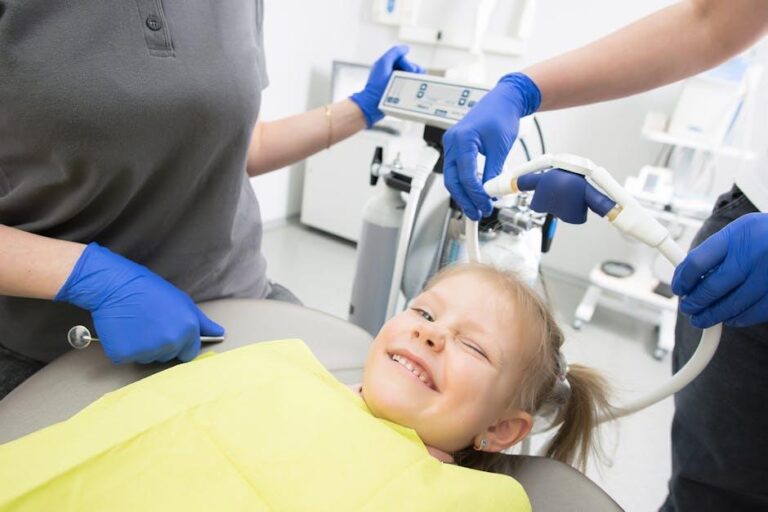1 in 3 Kids Has Dental Problems, Poll Finds – U.S. News & World Report
New data from a recent poll conducted across the United States has revealed a startling statistic: one in three children suffer from dental problems. This concerning figure highlights an urgent public health issue that affects many American families. Dental problems in children can lead to pain, difficulty eating, missed school days, and long-term oral health issues if left untreated.
In this comprehensive article, we’ll explore the findings of the poll reported by U.S. News & World Report, discuss the causes and consequences of childhood dental problems, and provide actionable steps for parents to protect their kids’ smiles.
Understanding the Poll Findings
The recent nationwide poll surveyed parents and guardians, evaluating the oral health status of their children along with their dental care habits. Key insights include:
- One in three children currently has some form of dental problem, including cavities, tooth decay, or gum issues.
- Socioeconomic factors contribute heavily; children from low-income families are more likely to experience dental issues.
- Preventive dental care, like regular dental visits and proper brushing, is inconsistently practiced across the country.
These findings suggest an uneven landscape in children’s oral health, highlighting the need for better education, access to dental care, and public health initiatives.
Common Dental Problems in Children
Dental problems in kids are often misunderstood or underestimated. Here are the most frequently seen issues:
| Dental Problem | Description | Common Causes |
|---|---|---|
| Cavities (Tooth Decay) | Destruction of tooth enamel leading to holes or cavities | Poor oral hygiene, sugary snacks & drinks, lack of fluoride |
| Gum Disease (Gingivitis) | Inflammation of gums causing redness, swelling, or bleeding | Improper brushing, plaque buildup, mouth breathing |
| Tooth Sensitivity | Discomfort caused by hot, cold, or sweet foods | Enamel erosion, cavities, gum recession |
| Malocclusion | Misaligned teeth or bite issues affecting chewing & appearance | Genetic factors, thumb sucking, prolonged pacifier use |
Why Are Dental Issues So Prevalent Among Kids?
There is no single reason for the high incidence of dental problems among children. Some critical factors include:
- Diet and sugary consumption: Excess consumption of sugary foods and drinks fuels cavity development.
- Irregular dental visits: Inconsistent check-ups prevent early detection and treatment.
- Limited dental hygiene education: Many children don’t fully understand the importance of brushing and flossing.
- Access disparities: Children in underserved communities often lack access to quality dental care.
- Oral habits: Habits like thumb-sucking can affect teeth alignment and overall oral health.
Actionable Tips for Parents to Prevent Dental Problems
Prevention is the best way to combat the widespread dental issues facing children today. Here are some practical tips to help your child maintain a healthy smile:
- Schedule Regular Dental Checkups: The American Academy of Pediatric Dentistry recommends a dental visit every six months.
- Establish Proper Brushing Habits: Encourage brushing twice a day with fluoride toothpaste and teach your child the correct technique.
- Limit Sugary Snacks and Drinks: Replace sugary beverages with water and opt for healthy snacks like fruits and vegetables.
- Floss Daily: Help your child floss to remove food particles and prevent plaque buildup between teeth.
- Use Dental Sealants: Sealants protect the chewing surfaces of back teeth and can significantly reduce cavities.
- Lead by Example: Make dental health a family priority to encourage positive habits.
Benefits of Early Dental Care
Addressing dental health early not only prevents pain and discomfort but also contributes to a child’s overall well-being. Here are some benefits:
- Enhanced Speech Development: Healthy teeth aid in clear speech formation.
- Improved Self-confidence: Oral health impacts a child’s smile and self-esteem.
- Better Nutrition: Pain-free teeth help children chew food properly and get necessary nutrients.
- Reduced School Absences: Addressing dental issues minimizes missed school days caused by dental pain.
Case Study: Success Story of Improved Pediatric Oral Health
In a suburban school district with historically high rates of childhood dental problems, a collaborative initiative was launched involving parents, schools, and local dentists. The program included free dental screenings, educational workshops, and distribution of dental hygiene kits.
Within a year:
- Dental visits increased by 35% among participating children.
- Reported dental pain decreased by 40%.
- Parents reported higher confidence in managing children’s dental care.
This case study underscores the power of community engagement and education in improving children’s oral health outcomes.
Firsthand Experience: A Parent’s Perspective
Jessica, a mother of two from Ohio, shared her story: “When my older son had multiple cavities by age 7, I realized how important consistent dental care was. By switching to regular dental visits, limiting sugary drinks, and making brushing fun, my younger child has had no cavities so far. It’s been a learning curve, but it’s worth every effort.”
Stories like Jessica’s inspire other parents to take proactive steps in their child’s dental care journey.
Conclusion: Protecting Our Children’s Smiles
The revelation that 1 in 3 kids has dental problems is a call to action for parents, caregivers, and health professionals alike. Children’s oral health is foundational to their overall growth, confidence, and happiness. By understanding the causes, recognizing the risks, and embracing preventive measures, we can help reduce the prevalence of dental issues and ensure that children across the U.S. enjoy healthy, bright smiles for life.
If you are a parent or guardian, start today by consulting your child’s dentist, reinforcing good dental habits, and promoting healthy dietary choices. Together, we can change the statistic and give more kids the gift of a healthy smile.


